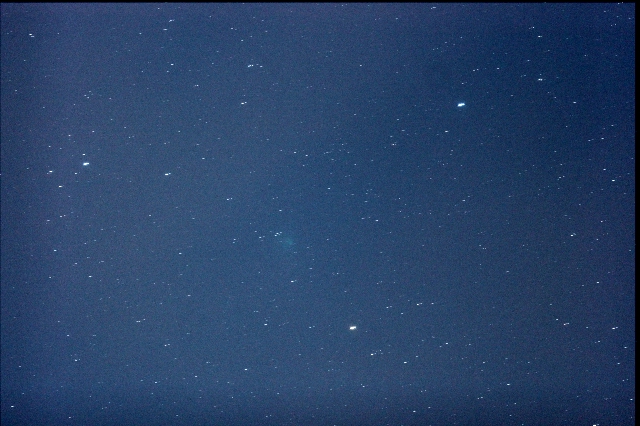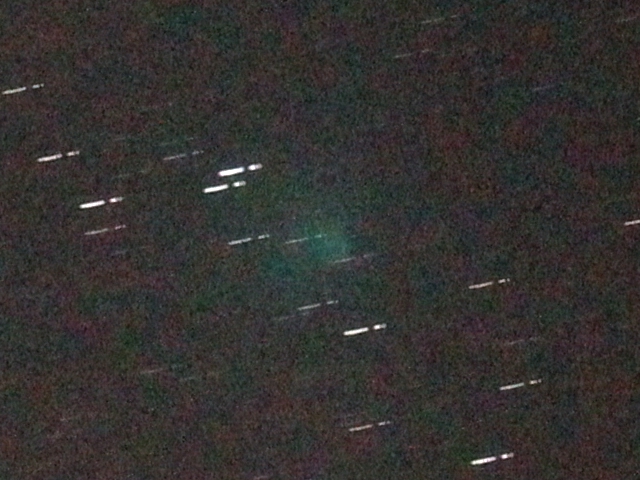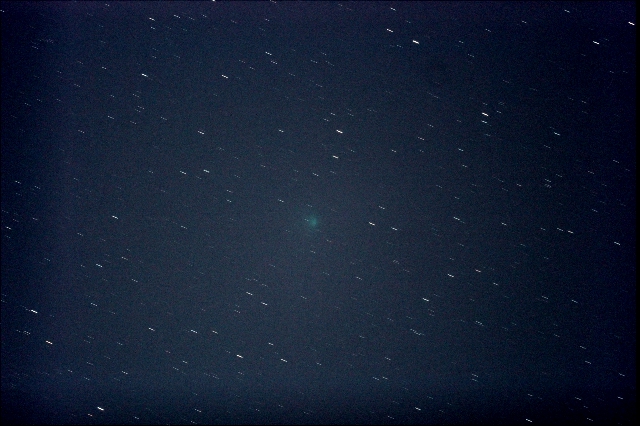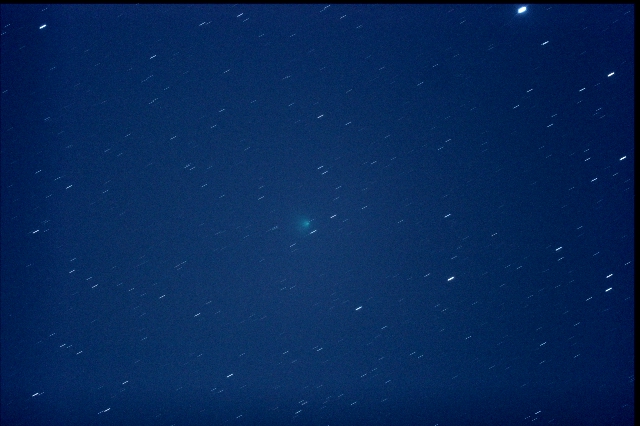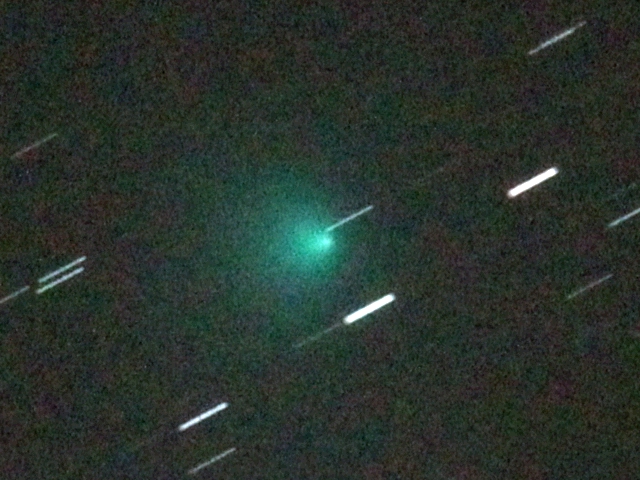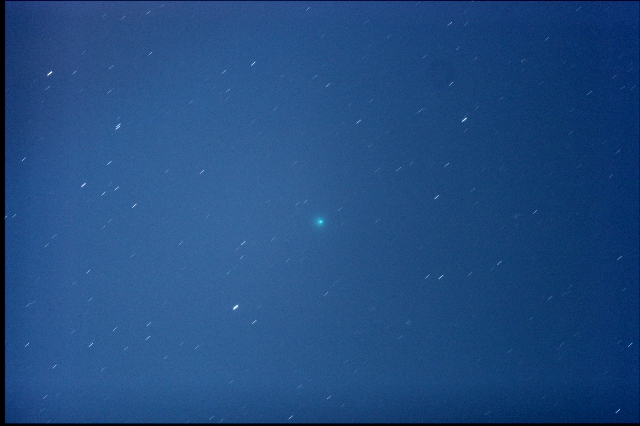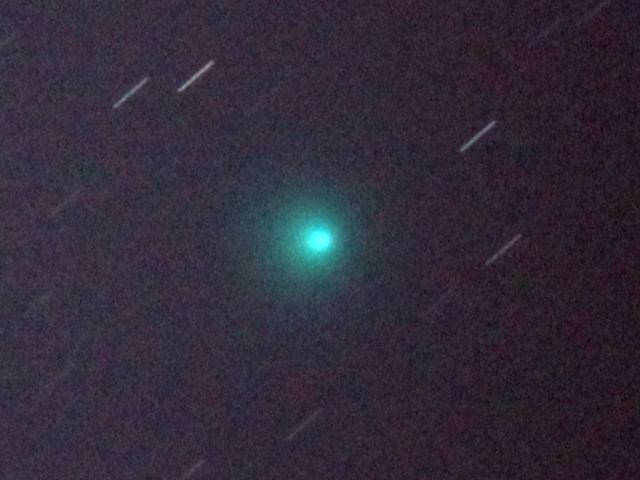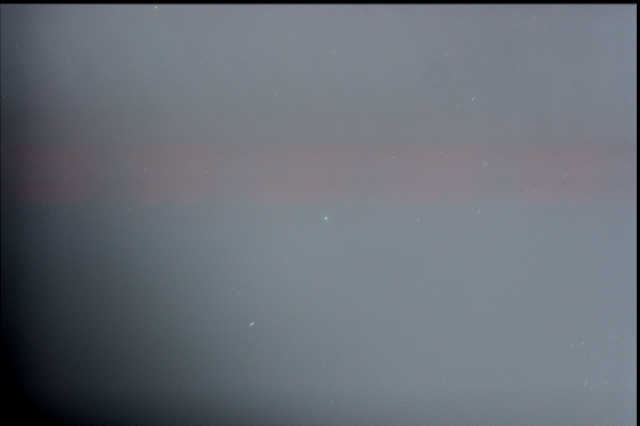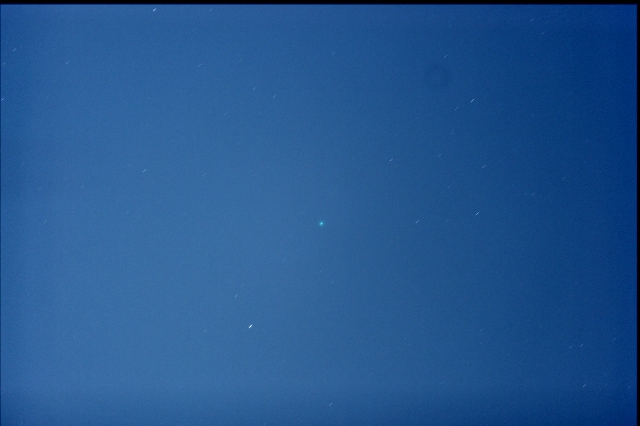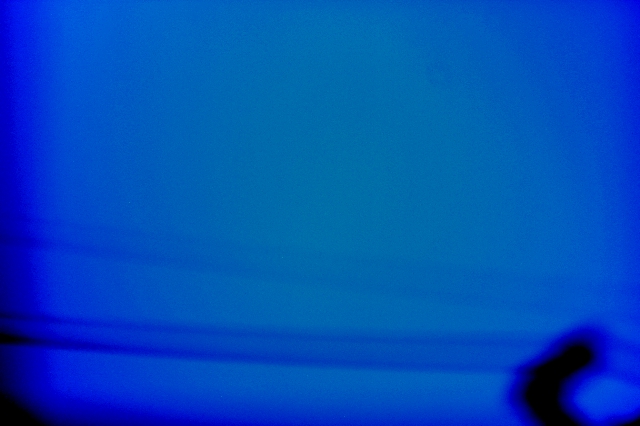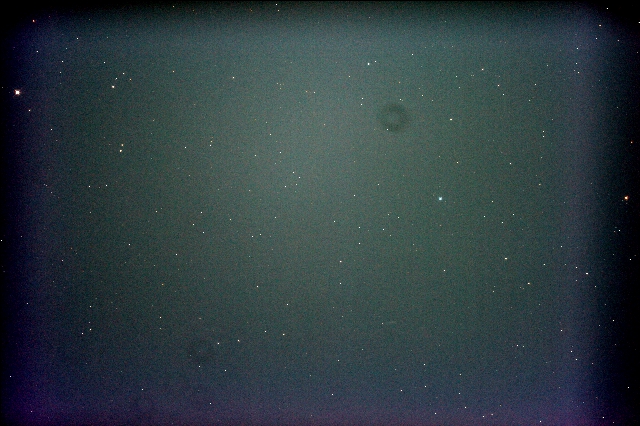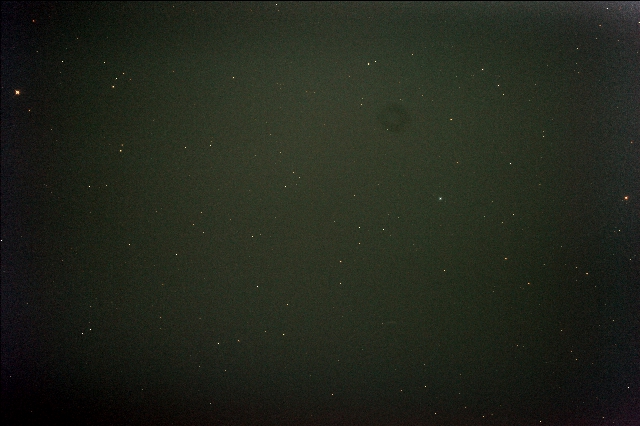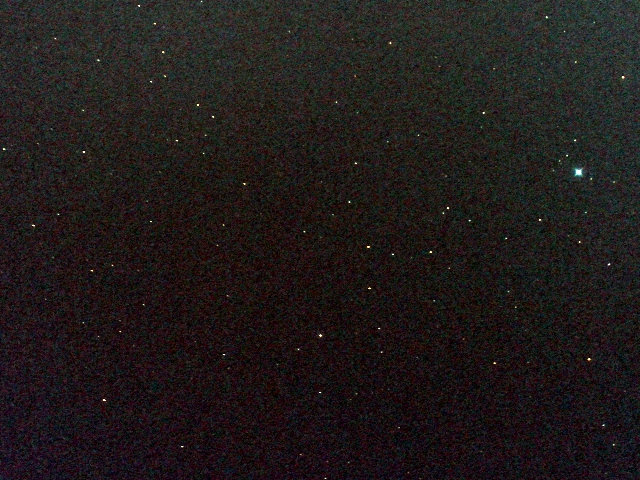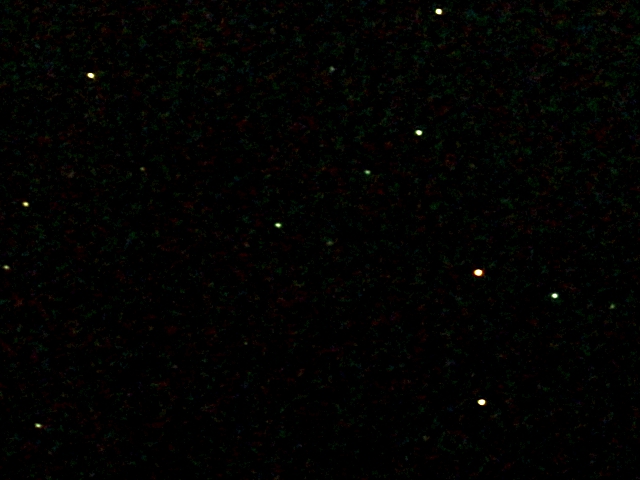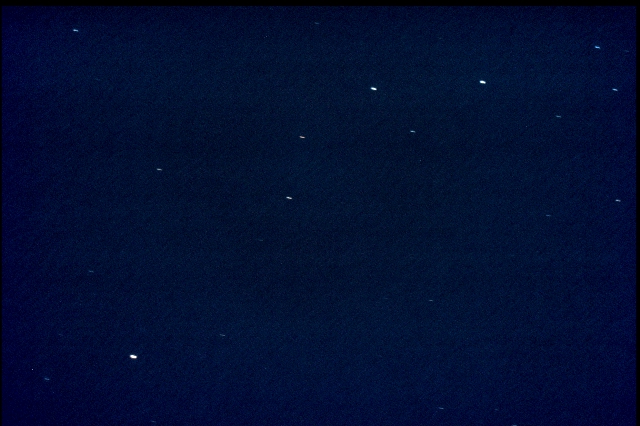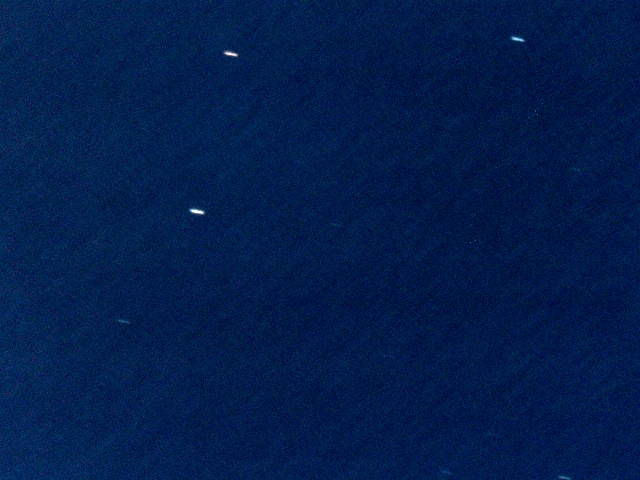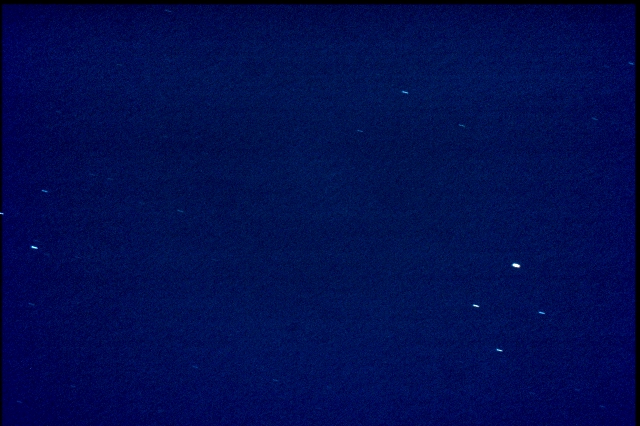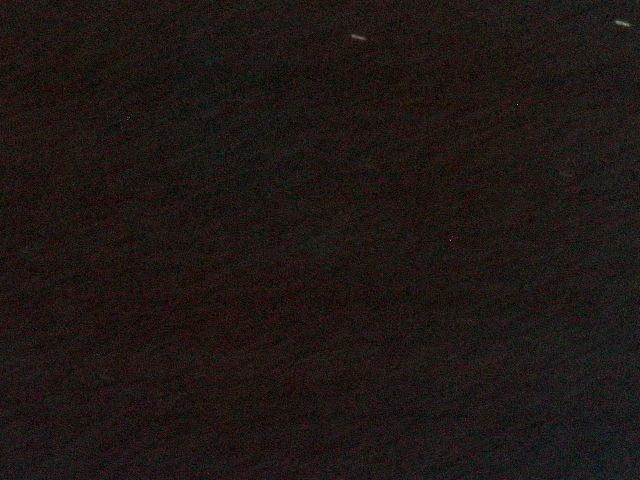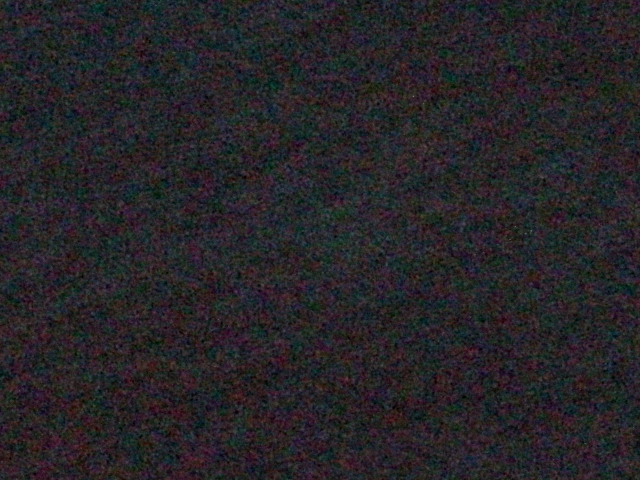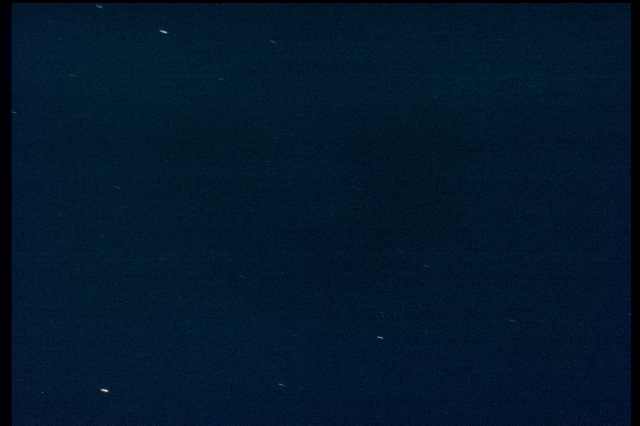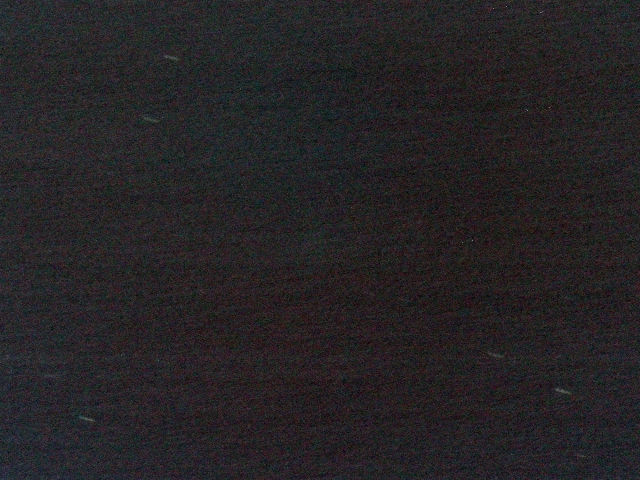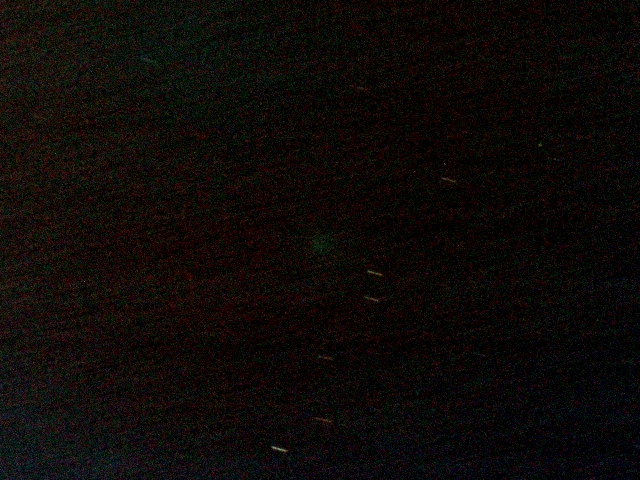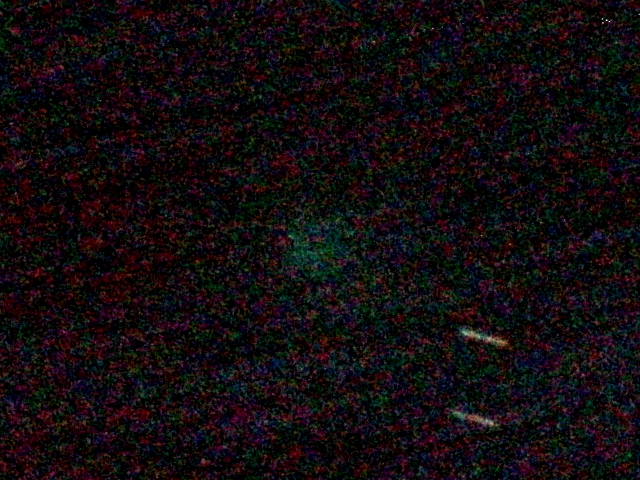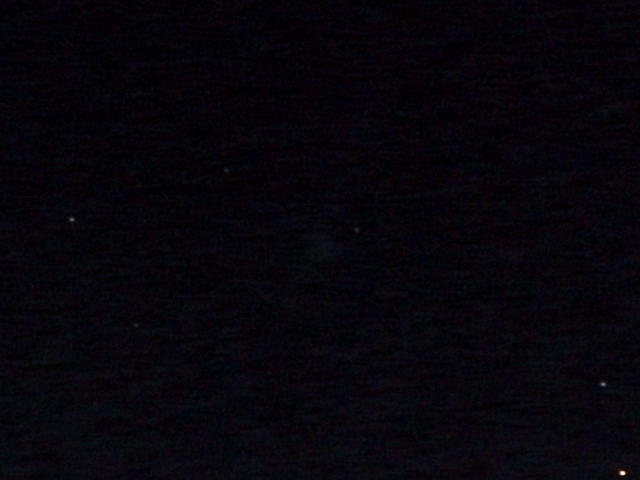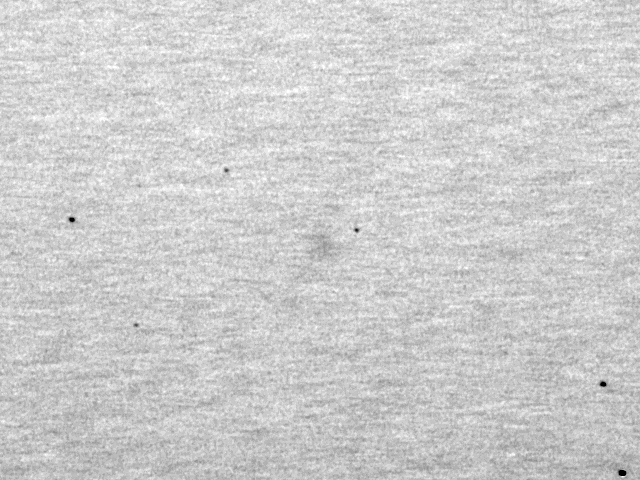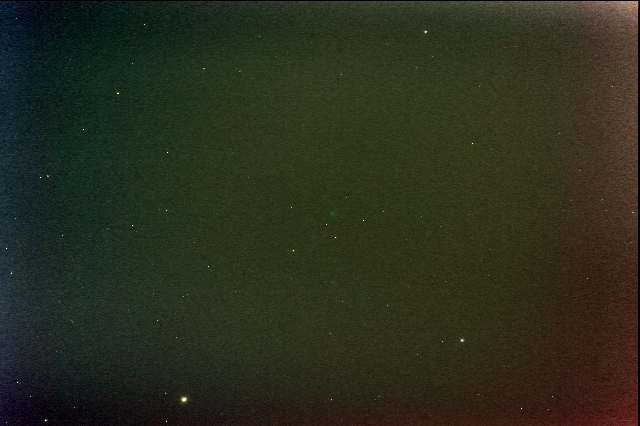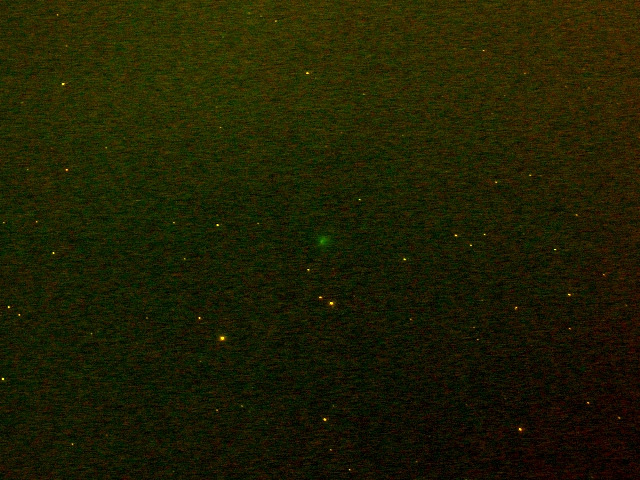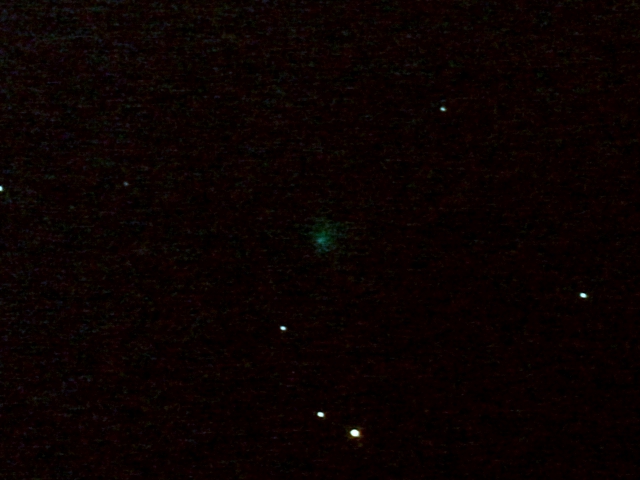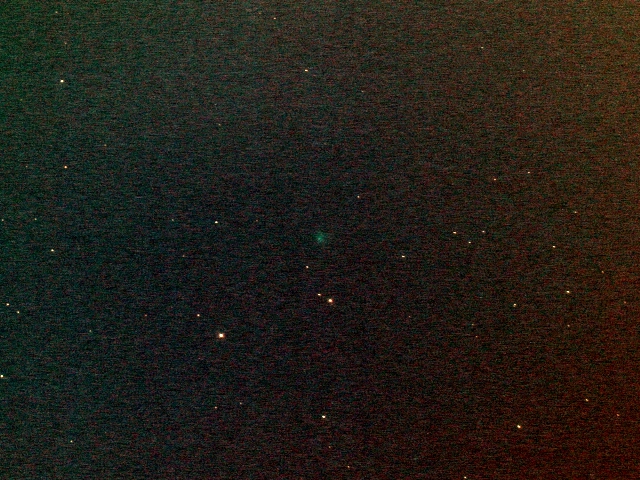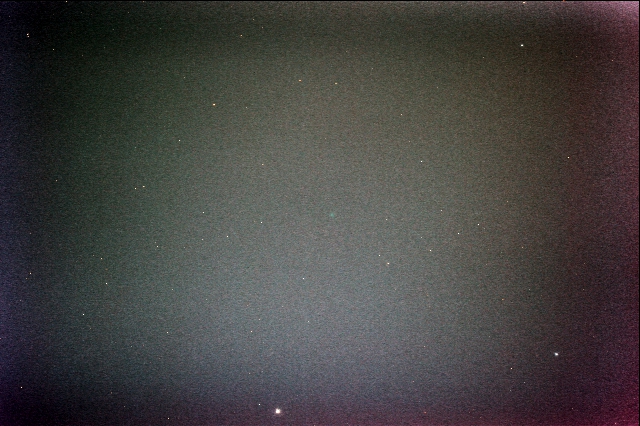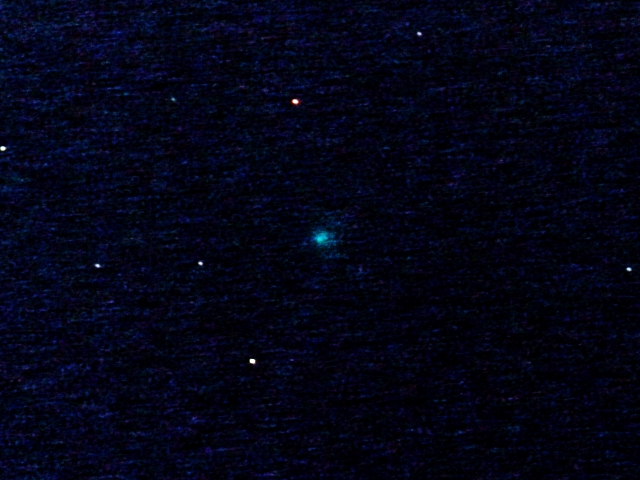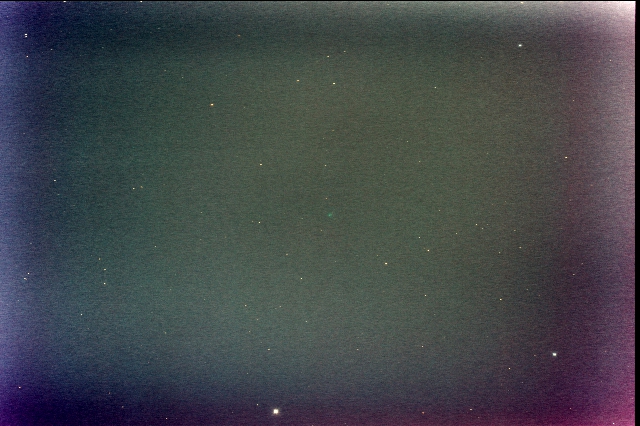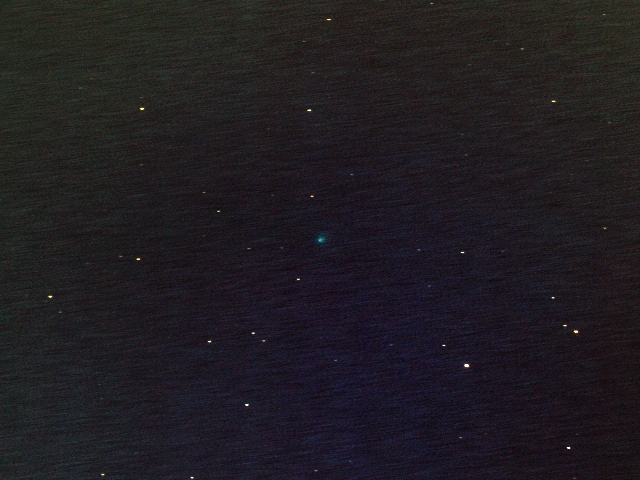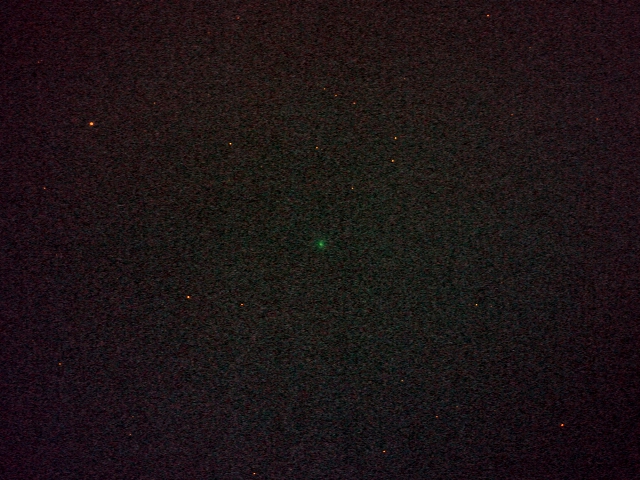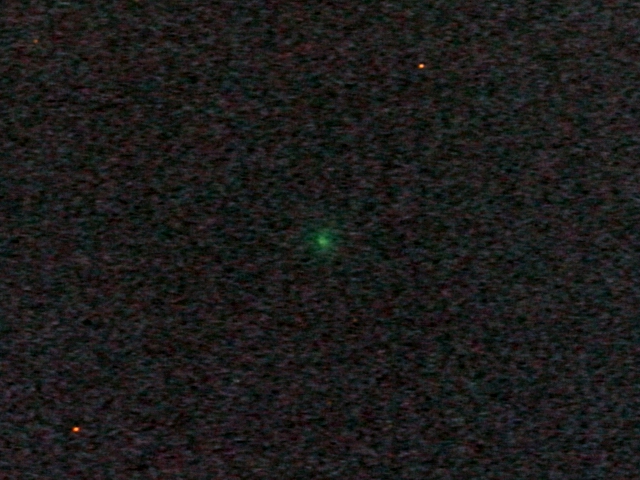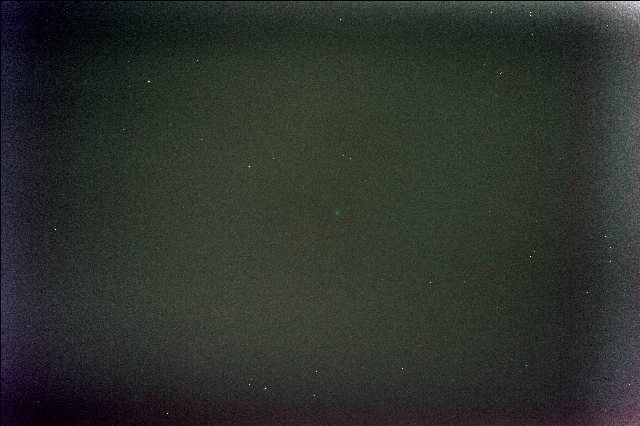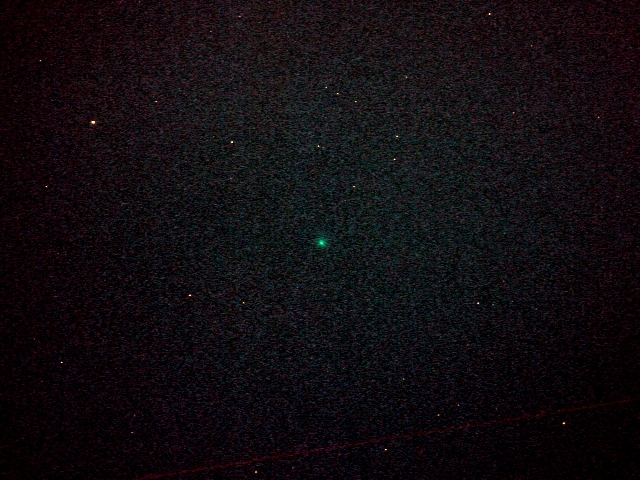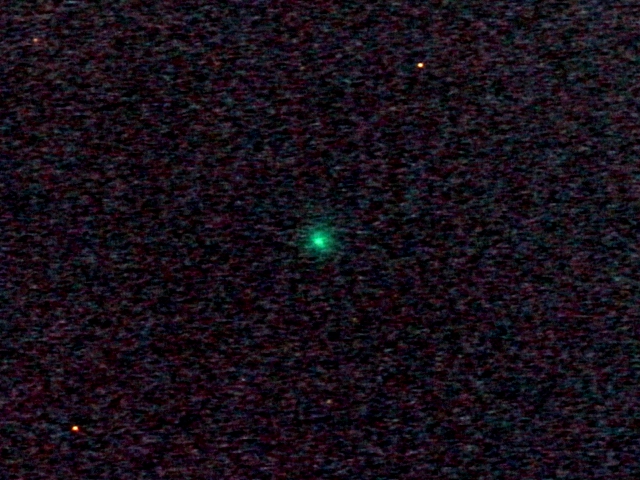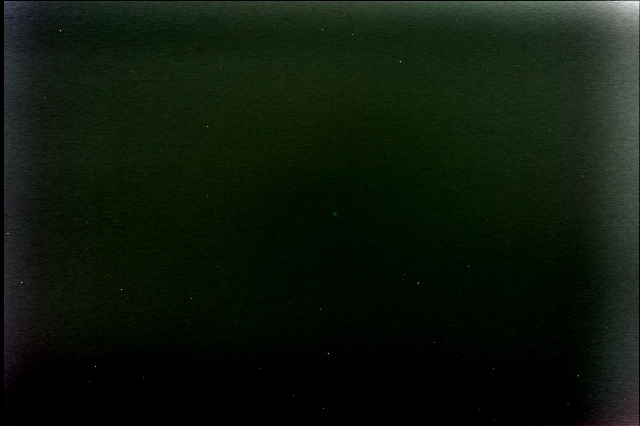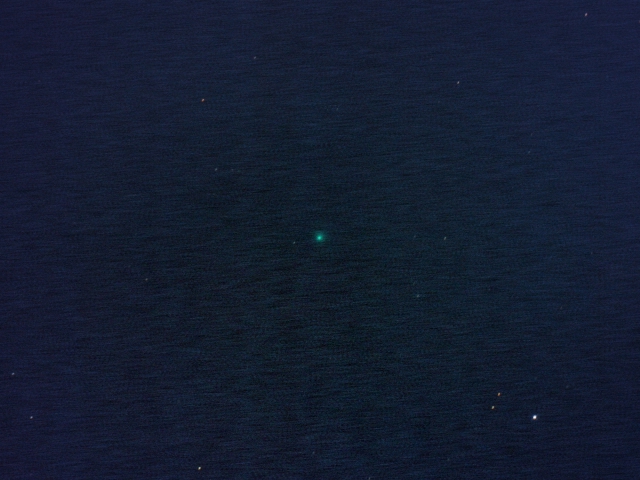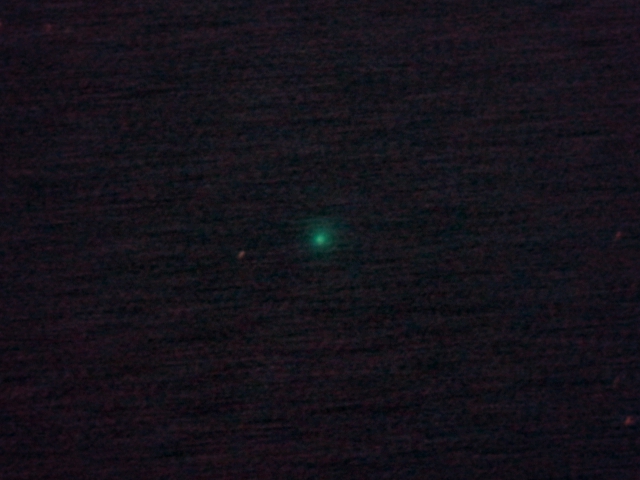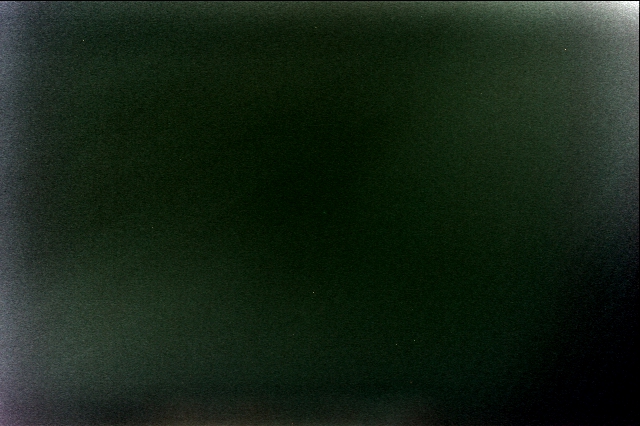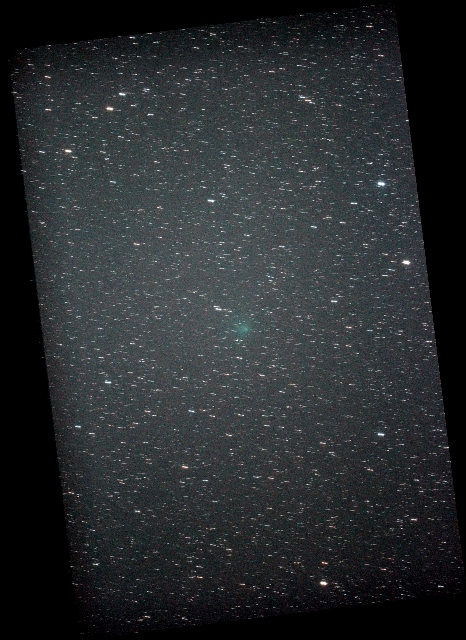
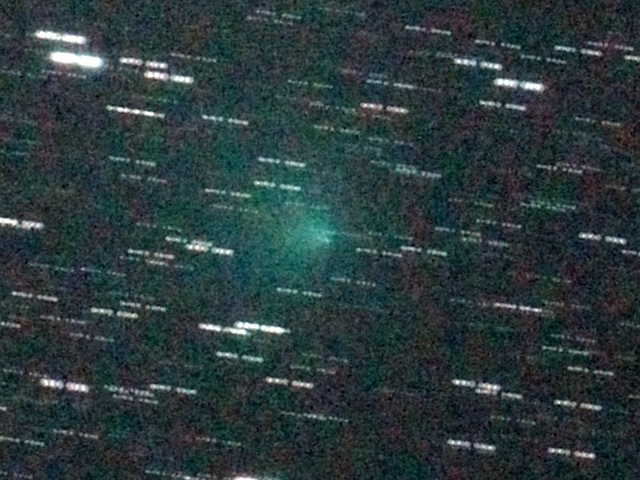
2P <エンケ彗星 >(2013)
2013/09/28T23:33:22〜23:42:36までの60秒間露光8枚を合成
露光時間:60秒*8=8分 長時間ノイズリダクション=オン
面の木駐車場
ε160/530mm + LPS-P2 + 60D/ISO6400 / EM200Temma2
StellaImage6.5で合成、レベル補正とリサイズ
|
2P/Encke
The comet was first discovered on 1786 January 17.8, by Pierre Me'chain (Paris, France) while searching for comets in the Aquarius region. Mechain said the comet appeared fairly bright when viewed through a telescope and exhibited a faint, narrow tail. No observations were possible on the 18th, but Me'chain and Charles Messier were able to confirm the comet on the 19th. Unfortunately, the comet's elongation from the sun was rapidly decreasing and no observations were made after the 19th. Subsequently, no orbit was computed. The comet passed closest to Earth (0.62 AU) on January 23.
The comet's second discovery was made by Caroline Herschel (Slough, England) during a routine sweep for comets on 1795 November 7.8. It was quickly confirmed by her brother William Herschel, who noted it could be seen with the naked eye. The comet was closest to Earth (0.26 AU) on November 9, and observations continued as the comet's elongation from the sun decreased. The comet was last detected on November 29. The comet's third discovery was made by Jean Louis Pons (Marseille, France) on 1805 October 20, with independent discoveries being made by Johann Sigismund Huth (Frankfurt an der Oder, Germany) on the 21st and Alexis Bouvard on the 22nd. On the 23rd Huth said the comet was visible to the naked eye and was similar in size and brightness to the Andromeda Galaxy (M31). The comet was last detected on November 20. Later calculations revealed the comet had passed closest to Earth (0.44 AU) on October 16. The comet's fourth discovery was made by Pons (Marseille, France) on 1818 November 27.9. He described it as very faint. The comet passed closest to Earth (0.60 AU) on 1819 January 17. |
2013年09月28日


